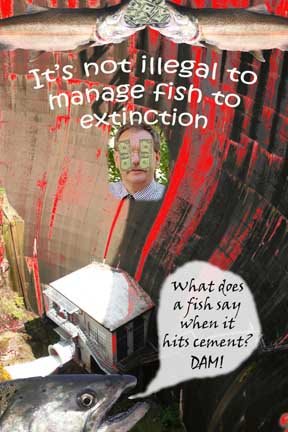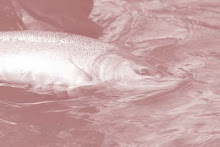Thursday, May 22, 2008
Comparing IRSM and RAWA Sites
When I first looked at the IRSM site, I didn’t think it was much. But as I followed the links I found good basic information about what they stand for. Some of the pages had links to other sites, but you had to make the effort to find these other links. It would better serve itself to have more links on the opening page to be able to access them easier. Overall, it seems like a very basic web site.
RAWA
This site hits you as soon as it loads. There are 24 links on the left side of the page, below that are links to RAWA supporters, and a scrolling RAWA in Media box. There are fifteen links to different speeches and articles with a link at the bottom to access more. Then as you scroll down there are numerous articles under the title Reality of Life in So-called "Liberated" Afghanistan and many photo links to the right side of the page that lead to a photomontage, some with videos, most of which are not for the faint of heart. As you scroll down more to the bottom of the page there are more links to different speeches and interviews with RAWA members. This is an extensive, well put together site.
Friday, May 16, 2008
How Not to Savbe a Salmon
by Ted Williams
Ted WilliamsFor centuries, killing predators was to fish and wildlife management what leeches were to medicine. By the mid-20th century, even the dullest minds in government had figured this out.
But duller minds were yet to come. Enter the administration of George W. Bush. In 2008, it is hawking control of salmon-eating birds, fish and mammals as if this were Dr. Kickapoo’s Elixir for Rheum, Ague, Blindness and Insanity.
Virtually the entire scientific community agrees that if the four nearly useless Snake River dams remain in place, Columbia and Snake river salmon stocks will go extinct. Even Bush’s National Marine Fisheries Service has admitted this. Mostly because of these dams, the system’s cohos are already extinct, sockeyes functionally extinct and 13 stocks in 78 populations are threatened or endangered.
Yet last October, the Fisheries Service released its draft Columbia-Snake salmon plan that calls for a surge in the war on predators. The surge, together with barging young salmon, increasing hatchery production and all the other bells, whistles and tweaks that have failed so spectacularly in the past, will cost $800 million every year. By comparison, the Army Corps of Engineers estimates the cost of breaching the dams at $1 billion.
There is no legal alternative to saving and restoring Columbia-Snake river salmon. The Endangered Species Act requires it. U.S. District Court Judge James Redden, who declared the Fisheries Service’s previous plan illegal in 2005, and its amended version illegal in 2006, has threatened to vacate the administration’s current plan, in which it trots out the ancient predator-scapegoats -- squawfish, Caspian terns and sea lions.
Squawfish, or “pikeminnows,” as the PC fish police have attempted to rename them, proliferate in dam-made dead-water where they eat ocean-bound salmon smolts, especially the ones milling around as they strive to figure out the nearly non-existent current, and those injured or disoriented by passing through turbines.
Although no bounty system anywhere has ever worked, the Bonneville Power Administration is funding the biggest one in history. Implementing this counter-insurgency are Oregon and Washington. “How can YOU save a salmon? Go fishing!” proclaims the Washington Department of Fish and Wildlife, calling to mind the equally brainless bumper sticker popular in Idaho and Wyoming: "Save a Deer. Kill a Wolf."
For your first 100 squawfish you get $4 each; then $5 each. When you hit 400 fish, the bounty rises to $8. Catch a tagged squawfish and you collect $500. Last year, taxpayers paid out almost $1.3 million in squawfish bounties. Yet the squawfish population remains healthy and stable: In 2000, bounty hunters killed 187,596 fish; seven years later they killed 190,870.
Squawfish are natives. But what are the feds and states doing about the alien smallmouth bass that also proliferate in the tepid impoundments and that also eat smolts? Nothing; they’re popular with license buyers who almost always release them.
Then there are those pesky sea lions. Because salmon out-swim them in the open sea, the fish aren’t their natural prey. But sea lions are quick to take advantage of unnatural situations. So they’ve learned to travel 140 miles up the Columbia River and chow down on adult salmon butting into the Bonneville dam. Last March, the Fisheries Service granted Oregon and Washington permission to annually kill 85 sea lions.
But there are also those voracious Caspian terns, which see the salmon hatcheries on the lower Columbia as the world’s biggest bird feeders. By 1998, 18,000 terns were nesting on dredge-spoil dumps. Because they were also eating wild fish, the Fisheries Service and the Corps of Engineers set about moving the colonies to another spoil dump closer to the Pacific. But the birds continued to proliferate. Now the feds plan to move them yet again, this time to six new locations, including an island the Corps will build for them on an inland reservoir. Projected cost for the first year: $2.4 million.
Suppose the Bush administration prevails against squawfish, sea lions and terns. Is it then going to pacify the rest of nature? Will it attack cormorants, which eat more smolts than sea lions and terns combined? And what about orcas and those smolt-swilling walleyes and coastal cutthroat trout?
One gets the impression that if seismic activity threatened an obsolete dam, our federal government would try to rearrange earth’s tectonic plates. On the Snake River, we can save dams or salmon -- not both. The administration knows this. Its war on predators is based on deception. There can be no end and no victory.
Wednesday, May 14, 2008
Farm bill full of pet causes backed by individual lawmakers
By JIM ABRAMS – 1 hour ago
WASHINGTON (AP) — A good farm bill wouldn't be complete without a little pork.
Individual lawmakers, mostly senators, slipped several dozen "earmarks," or pet causes, into the $290 billion bill that have at best tentative connections to the tilling of the land.
There's tax breaks for horse owners, water for Nevada desert lakes, aid for the Pacific Coast salmon fishery industry and a crackdown on puppy trafficking.
Rep. Jeff Flake, R-Ariz., a leading opponent of earmarks, complained that some had been "airdropped in" at the last minute. "If you dig into them, you might find something untoward. You might not, but the fact is we don't have time to do that."
Republicans went after Democratic-backed provisions, such as one backed by Sen. Patrick Leahy, D-Vt., that allows the federal government to sell portions of the Green Mountain National Forest to a ski resort in the state. Leahy's office countered that the provision, backed by the state and the Forest Service, would save the Forest Service management costs by selling land that has long been used for skiing.
Another controversy was over a provision allowing state and local governments and non-profits to issue $500 million in tax-credit bonds to buy forest land for conservation purposes. The White House, which opposes the bill because of its cost and benefits for wealthy farmers, said that provision would authorize the purchase of 400,000 acres of land in Montana from a single owner, the Plum Creek Timber Co.
But Sen. Max Baucus, D-Mont., said it wasn't an earmark because it was a model for conservation efforts across the country and there are no geographic limitations in the legislation.
Rep. Mike Thompson, D-Calif., said $170 million in relief for the salmon crisis on the West Coast was "desperately needed by the communities and families who rely on salmon fishing." The Department of Agriculture argued that the funds were not needed because West Coast salmon fishermen received $60 million in federal aid two years ago.
House Republicans on Wednesday tried to strip the Leahy, Baucus and Thompson items from the House-Senate compromise bill, but fell short on a mainly party-line 230-193 vote.
The department also took aim at $175 million in funds championed by Senate Majority Leader Harry Reid, D-Nev., to provide water for desert lakes in his state.
The farm bill, one of the last major pieces of legislation with a chance of becoming law this year, was a natural magnet for lawmakers trying to advance legislation that might not get considered as individual bills. Often, accepting earmarks is a way for party leaders to reward the rank-and-file and secure their votes on the overall bill; on the farm bill it was more a case of the powerful — Reid, Senate Republican leader Mitch McConnell, Finance Committee Chairman Baucus and Judiciary Committee Chairman Leahy — using their influence to help their states or constituents.
Among other special provisions:
_ McConnell included a tax break for horse owners that would benefit horse farms in his state of Kentucky. His office asserted that the provision, which ensures that all race horses are depreciated over three years for tax purposes, regardless of when the horses start training, did not qualify as an earmark because it would affect tens of thousands of taxpayers in nearly every state. The Joint Committee on Taxation estimates this would cost $126 million over 10 years.
_ Senators from Pennsylvania, Delaware and Maryland succeeded in including $382 million for the Chesapeake Bay Watershed Conservation Program.
_ Baucus also got $1 million for a national sheep and goat industry improvement center.
_ The bill authorizes $10 million a year for five years for a program backed by Rep. Ruben Hinojosa, D-Texas, that helps people in poor, rural areas find housing.
_ It also authorizes funds for a drought mitigation center at the University of Nebraska, water systems for rural and native villages in Alaska and a congressional hunger center.
The Humane Society of the United States said it was supporting the farm bill because it has a provision, inserted by Senate Democratic Whip Sen. Richard Durbin, D-Ill., to curb the import of puppies for commercial sale from foreign puppy mills. The bill also strengthens the federal animal fighting law.
House Agriculture Committee Chairman Collin Peterson, D-Minn., made the point that the farm bill had no earmarks when it was first passed by the House, and that special projects came mainly from Senate requests.
"There was a lot worse stuff in that bill that we took out," he said.
The bill is H.R. 2419.
Columbia River Closed to Steelhead Fishing Until Further Notice
THE ASSOCIATED PRESS
OLYMPIA, Wash. -- The lower Columbia River will remain closed to steelhead fishing until further notice to avoid the incidental catch of protected spring chinook salmon.
Monday's announcement effectively delays the fishery for hatchery steelhead that was scheduled to open May 16 from the Interstate 5 Bridge downriver to the Rocky Point/Tongue Point line, a few miles east of Astoria, Ore.
Cindy LeFleur, of the Washington Department of Fish and Wildlife, says the steelhead closure could extend as late as June 15, unless returns of upriver spring chinook begin to pick up.
Fishery closures for spring chinook on parts of the Columbia and Snake rivers are already in effect, because those protected fish have been returning in much lower numbers than originally predicted.
Commercial salmon fisheries at Young's Bay, Blind Slough, Tongue Point and Deep River also were delayed for a week. Those fisheries primarily target chinook salmon returning to lower Columbia River tributaries, but they also intercept some upriver fish.
LeFleur says the steelhead season will start no later than June 16, when most spring chinook have returned to hatcheries or spawning areas.



The most striking I found was on gillnetskill.blogspot.com It shows the damage gillnets do to fish.

This cause could use art to get people motivated. At the top of the Blog is one I’ve put together.


